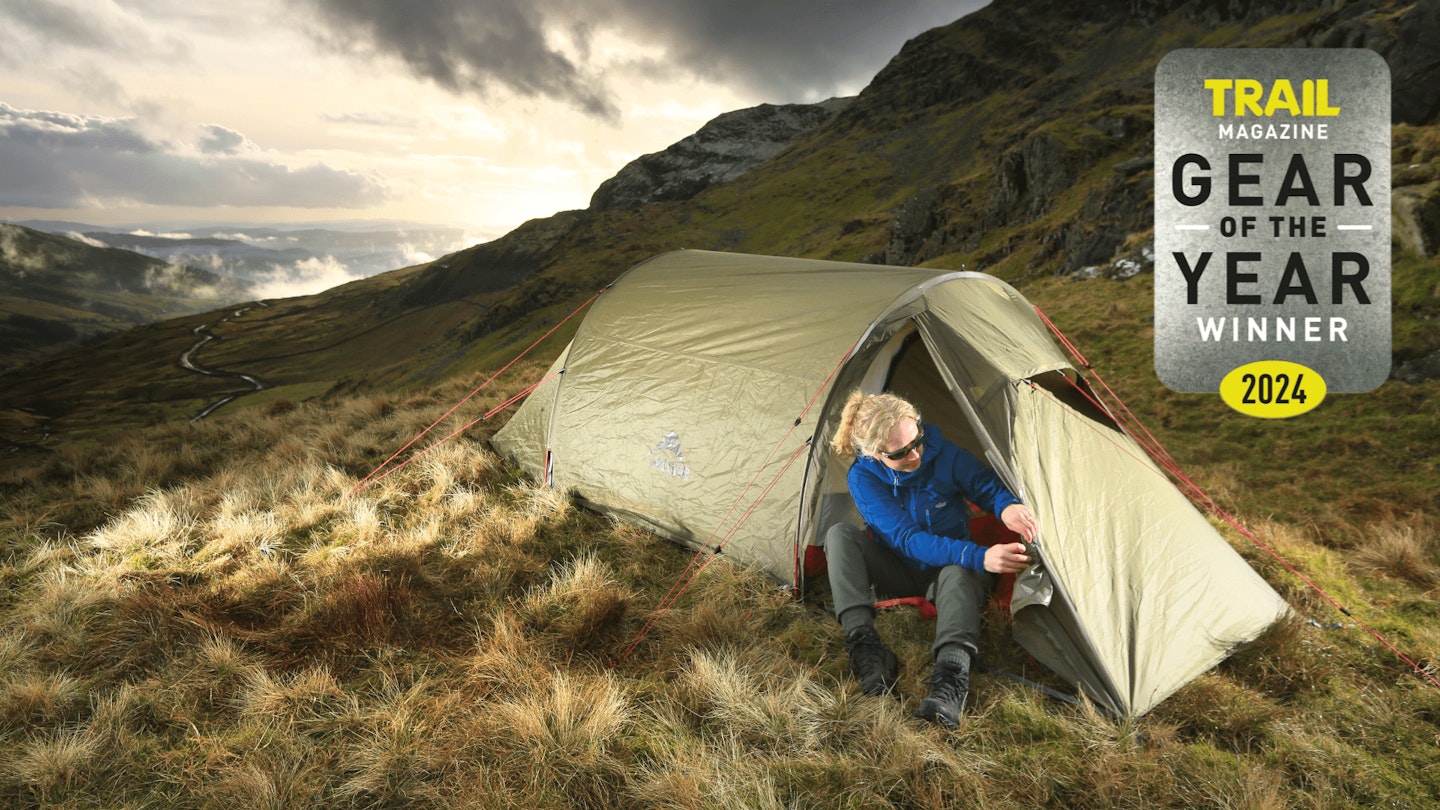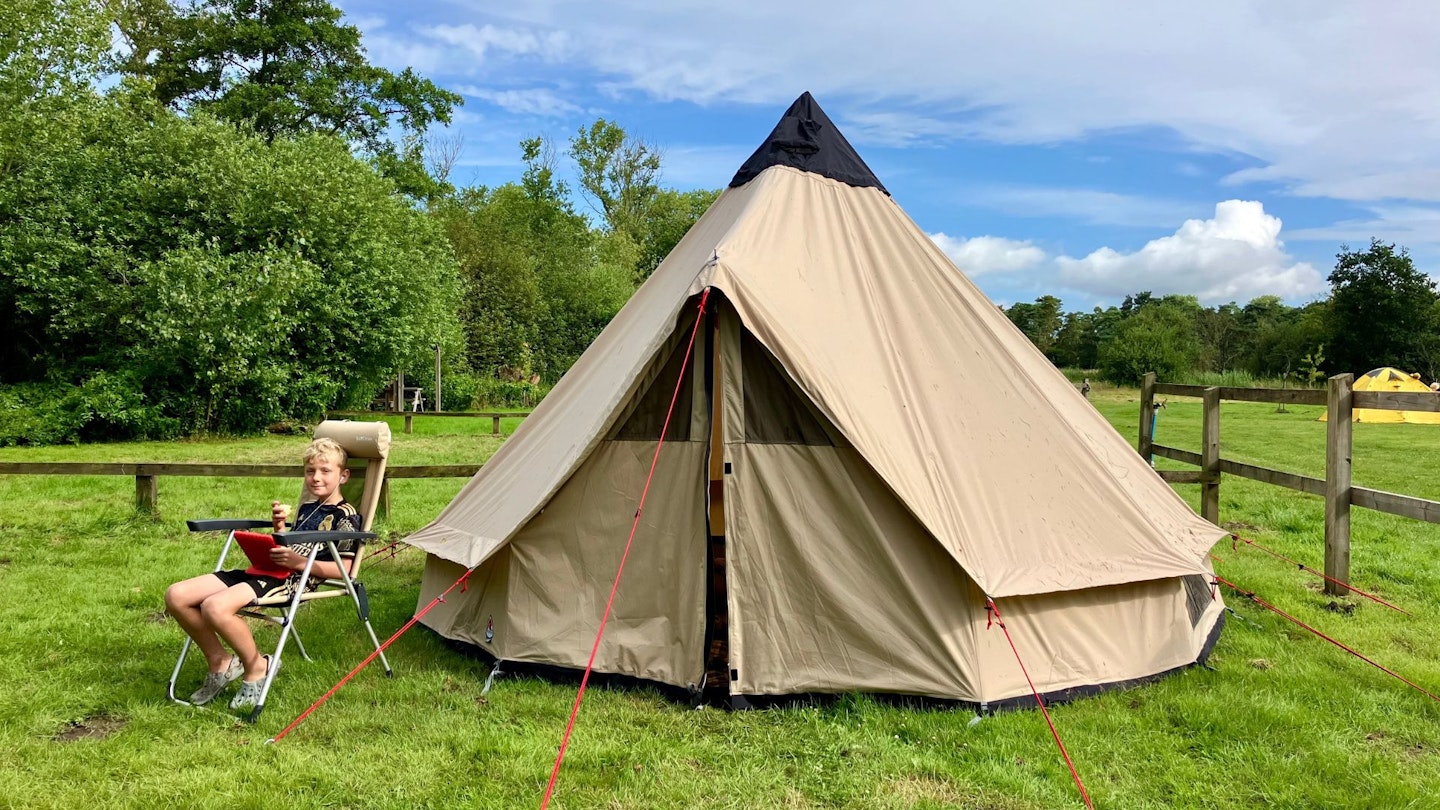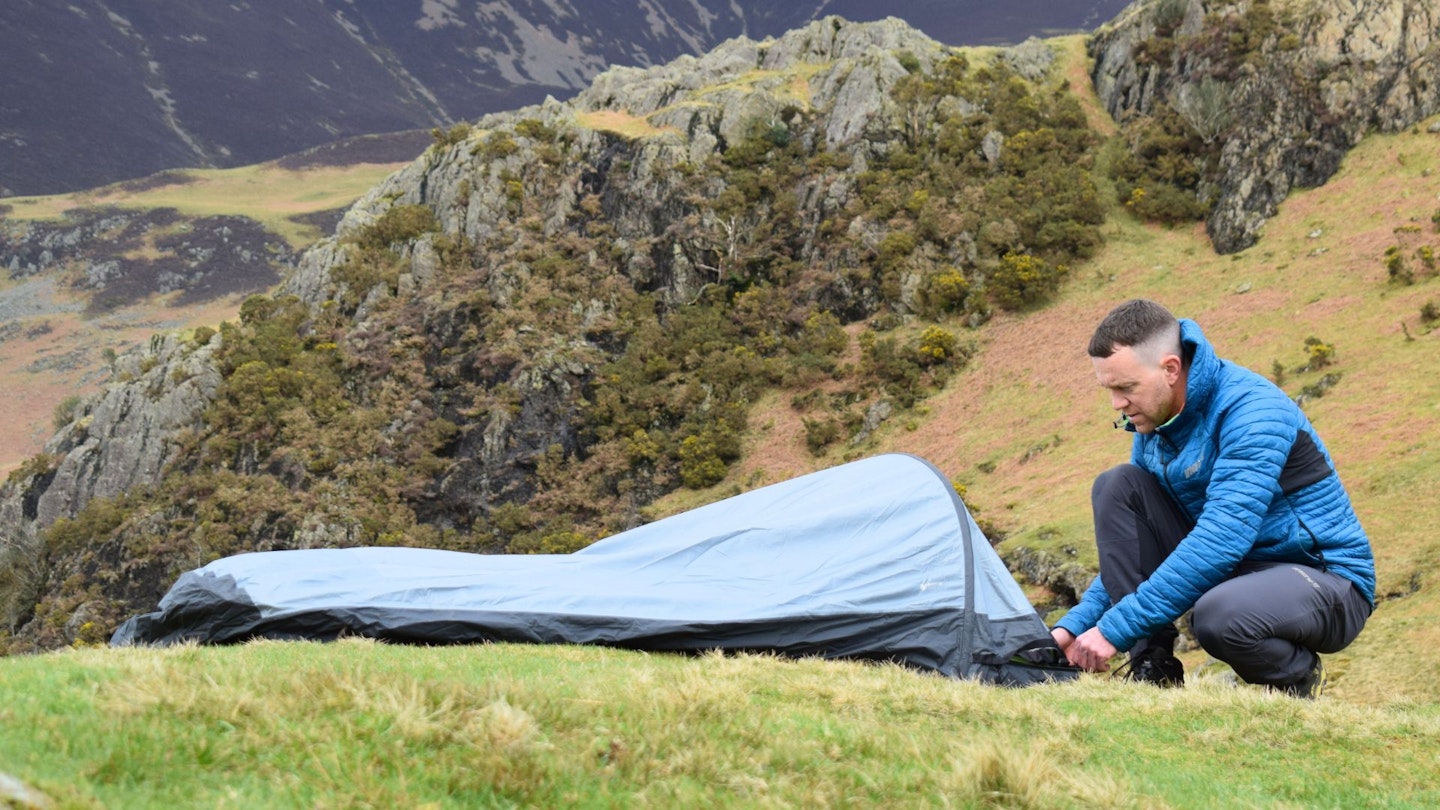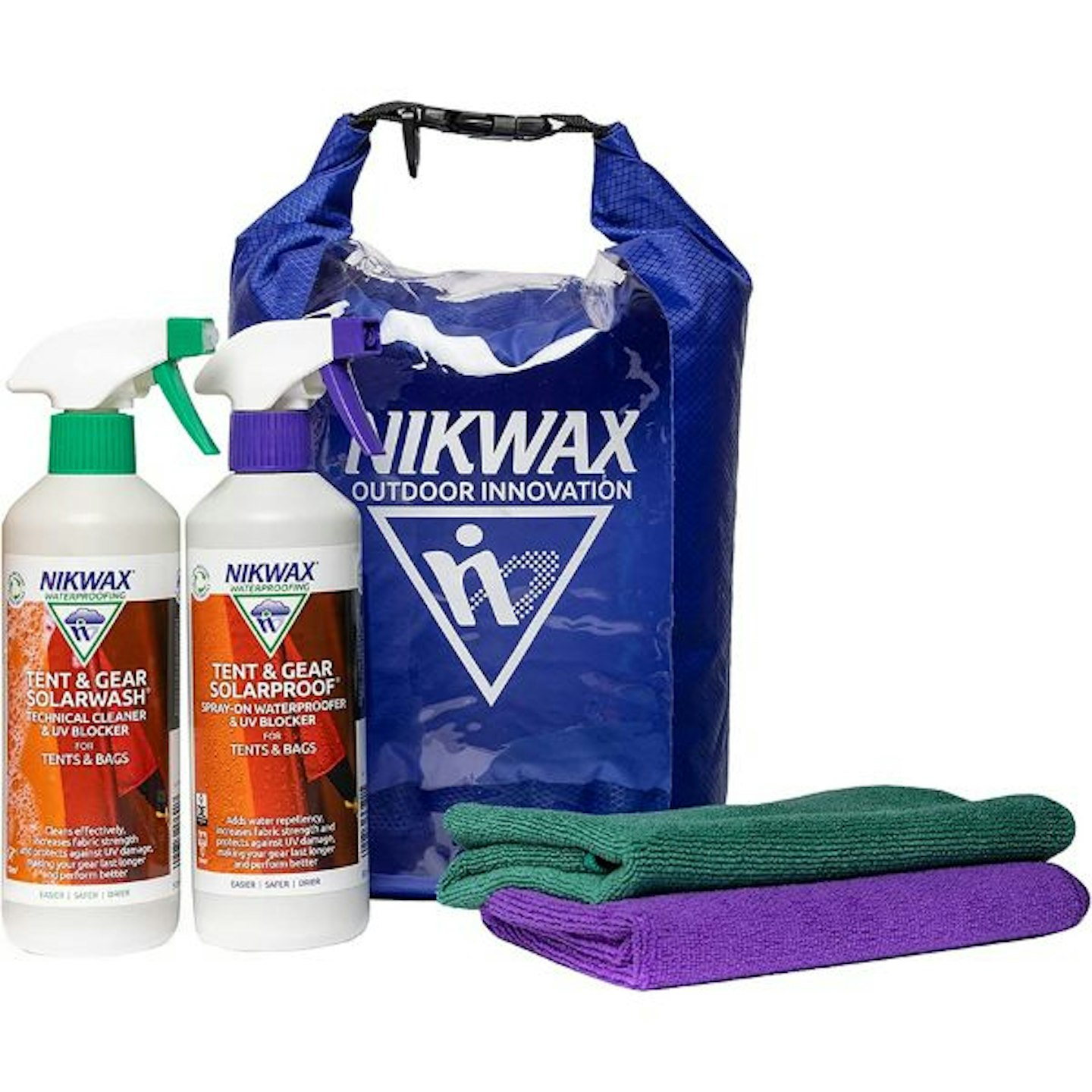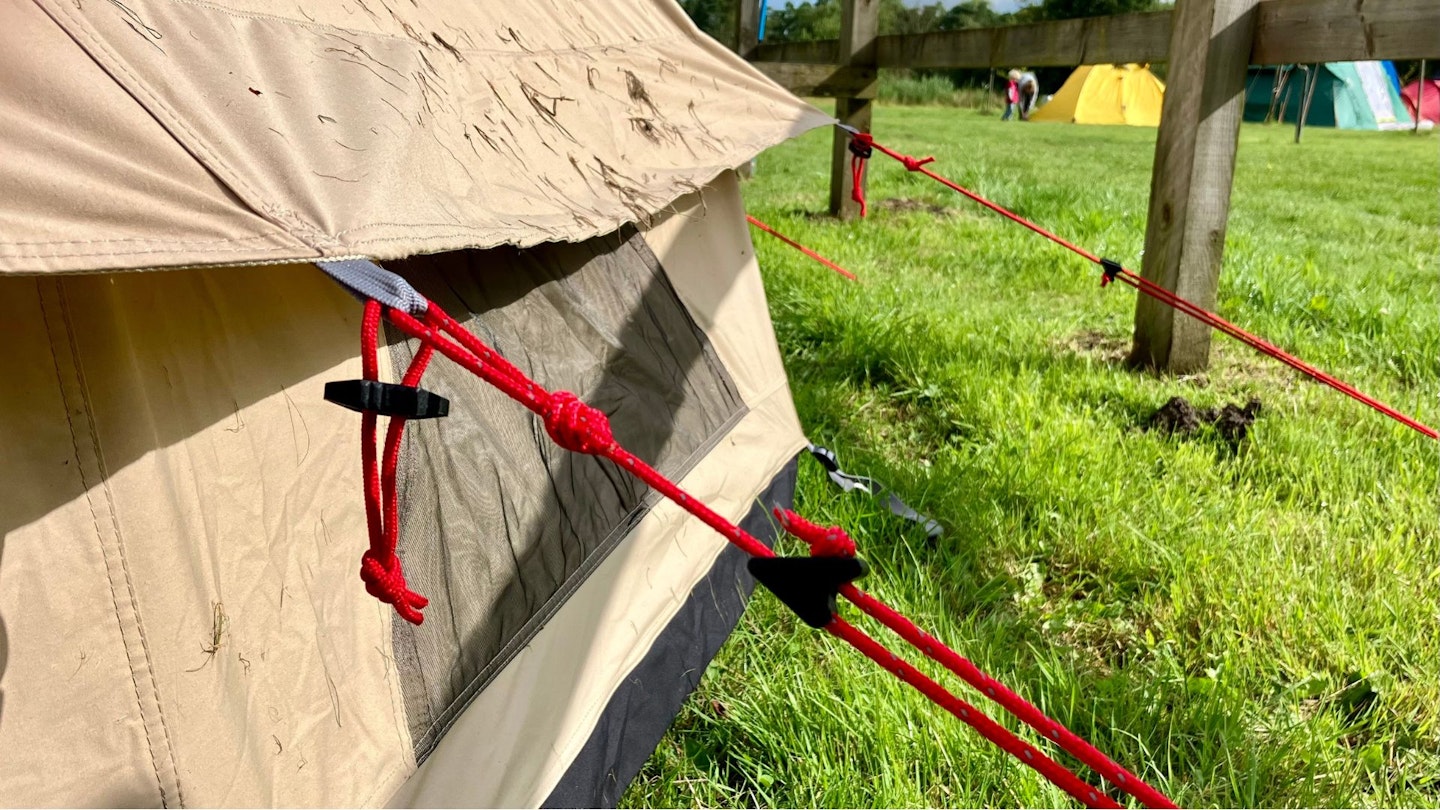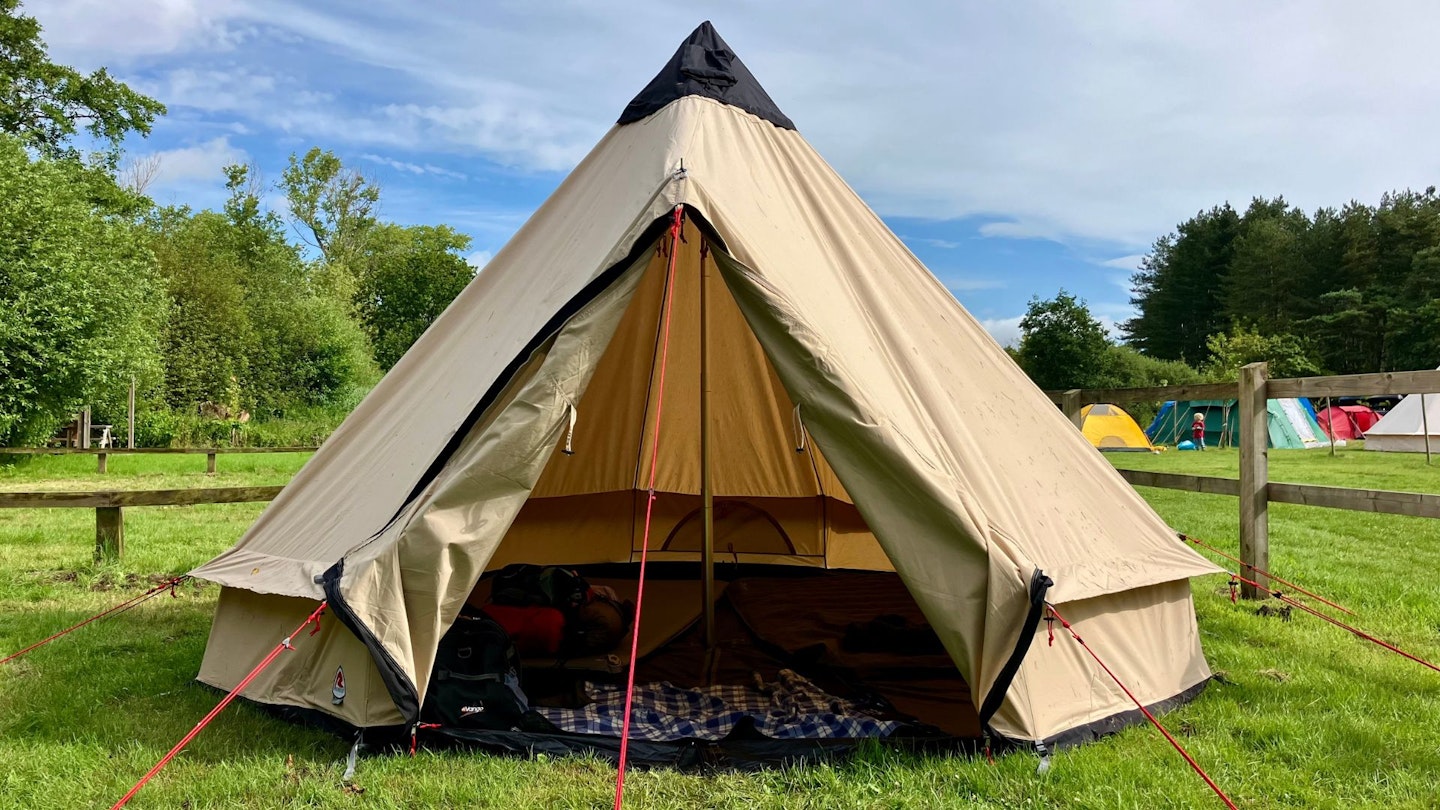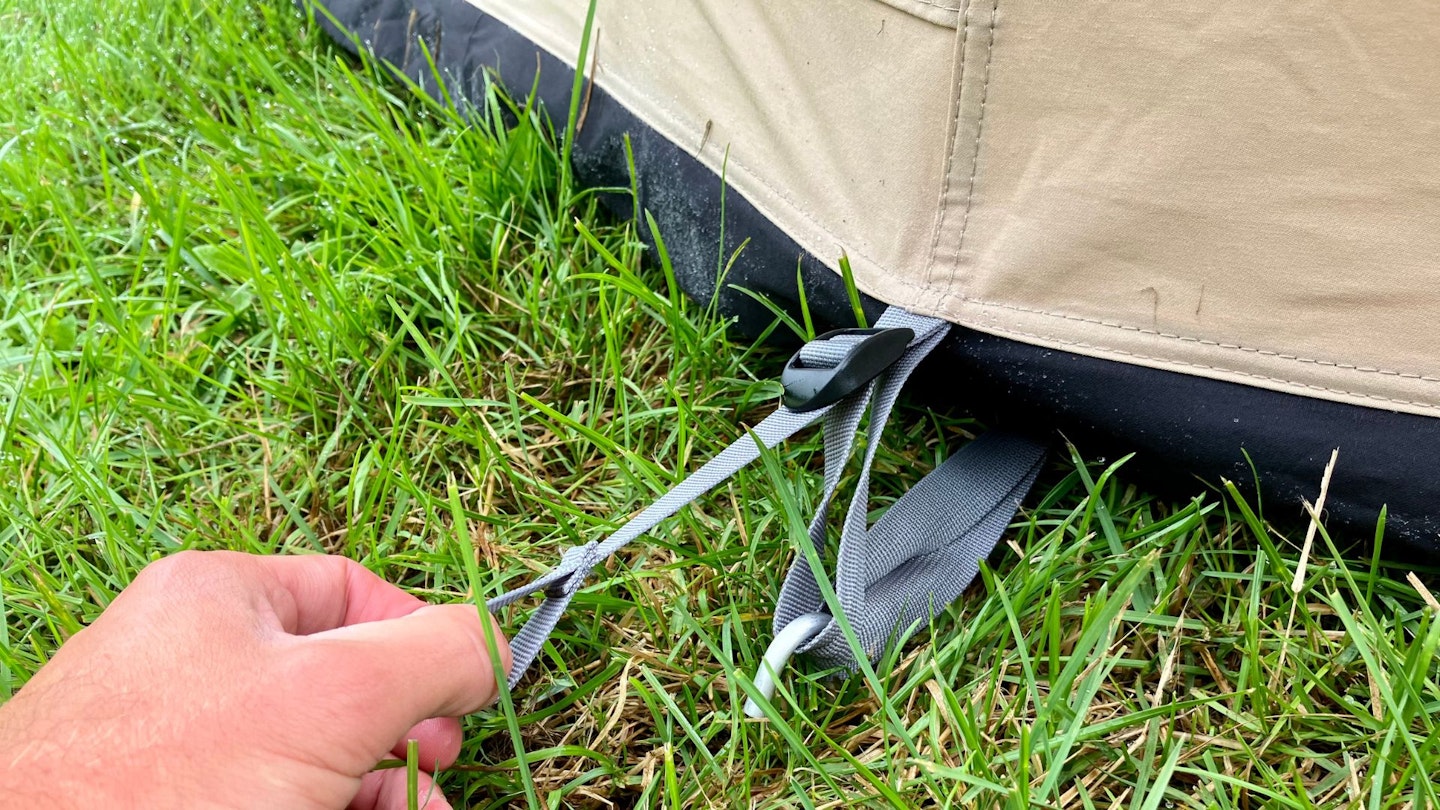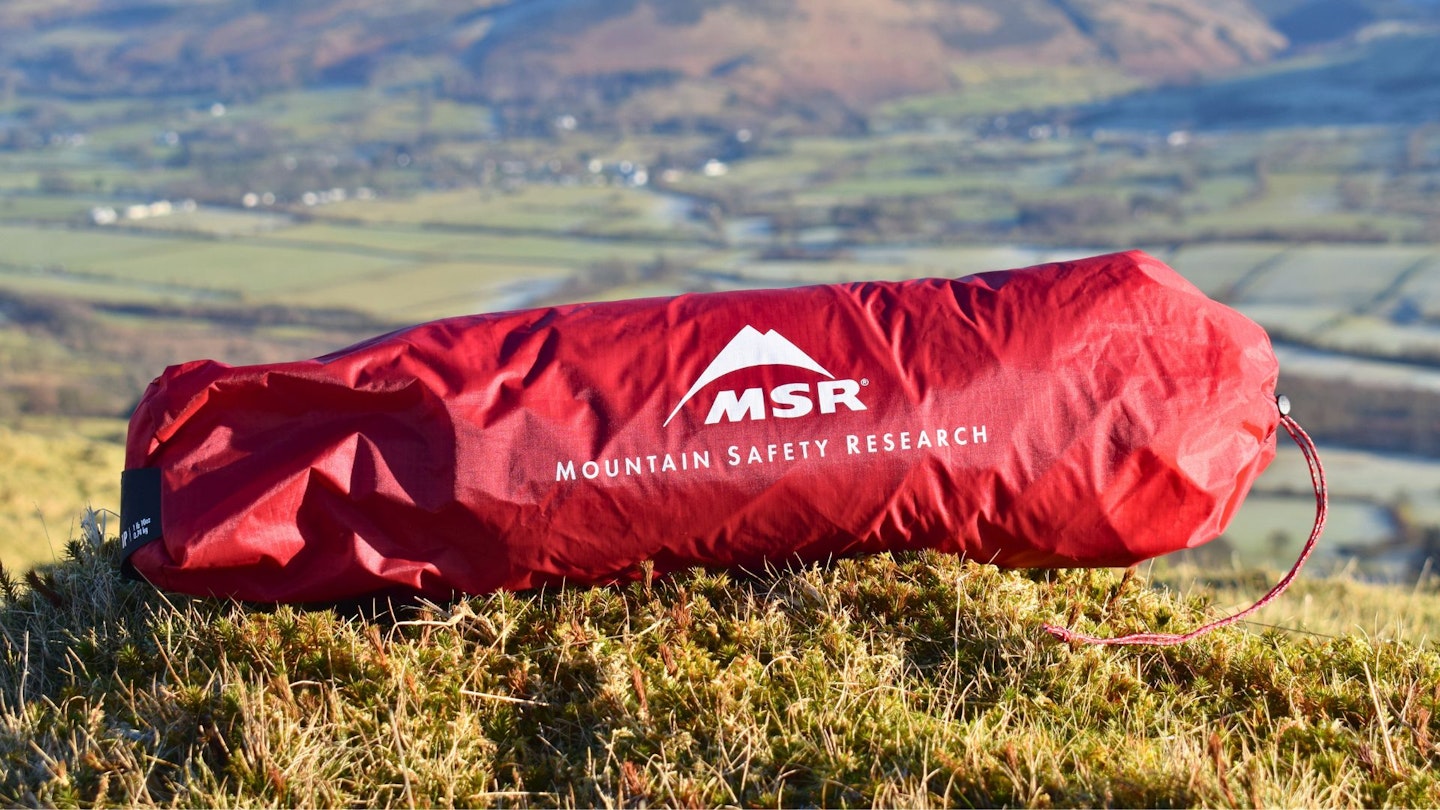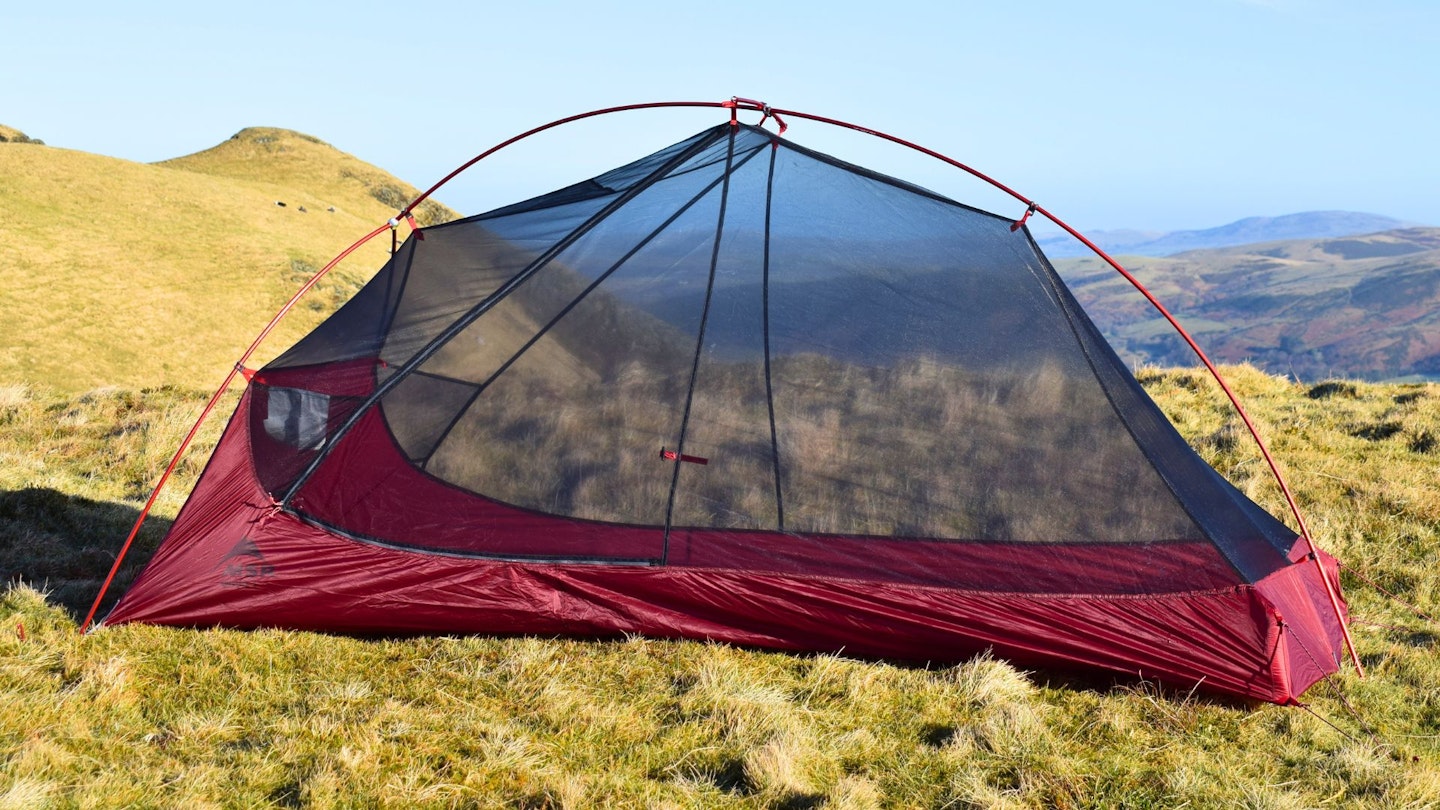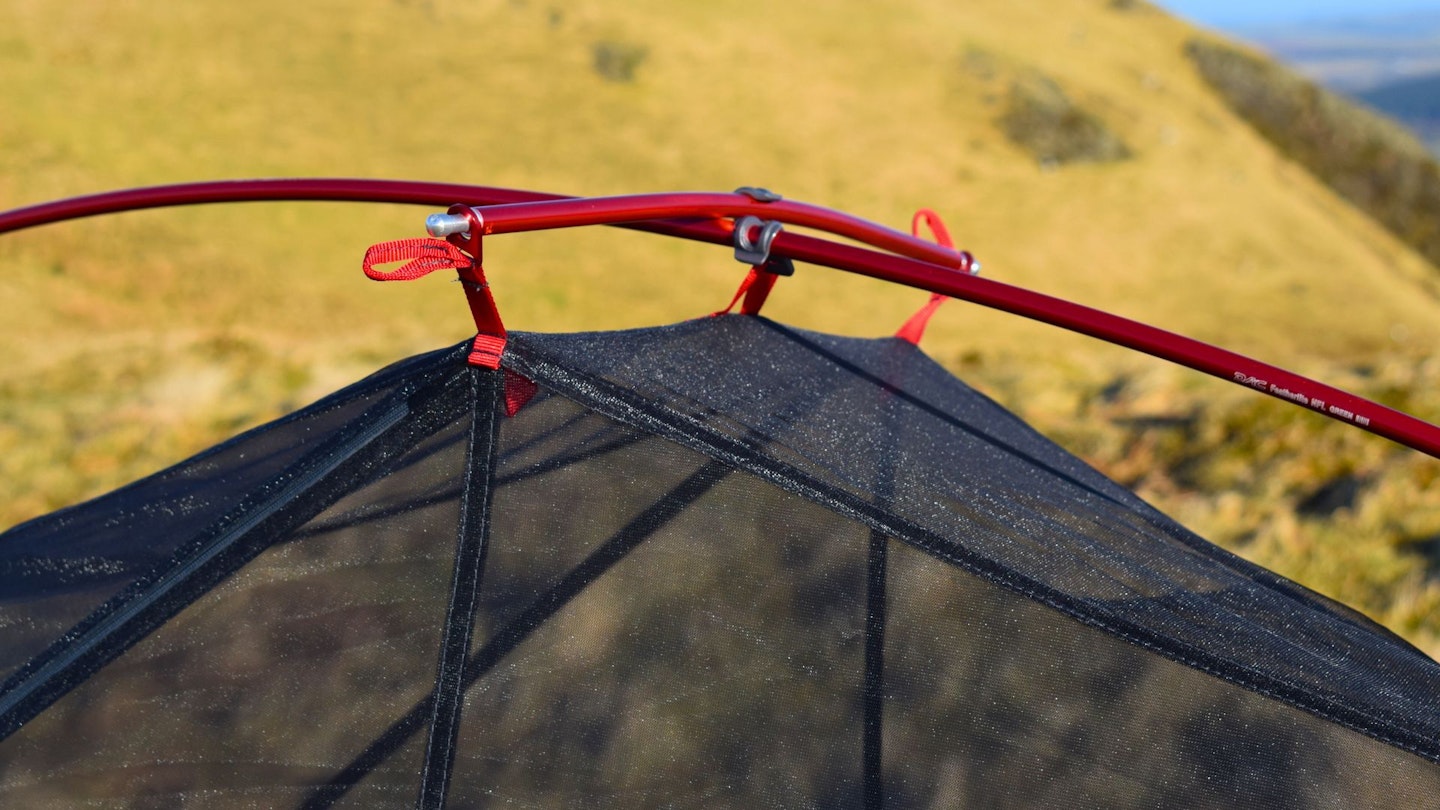The form of tents may differ today to those of 30,000 B.C. made from foliage or animal hides. But the function doesn't: protection from the elements.
Using the hides of mammoths to make tents isn't possible today. Even if it was, it would be an unpopular move. So we use synthetic materials for our lightweight tents instead. In this guide, we're looking at the best tents for hiking and camping. These, plus a couple of other popular options like roof tents.
Getting the right tent is all about picking one that conforms to your needs. There's such a vast array of tent designs that there will always be something for you. Of course, price is one factor, but you also need to consider shape, size, materials, sustainability, and weather resistance to name just a few.
What are the best tents of 2025?
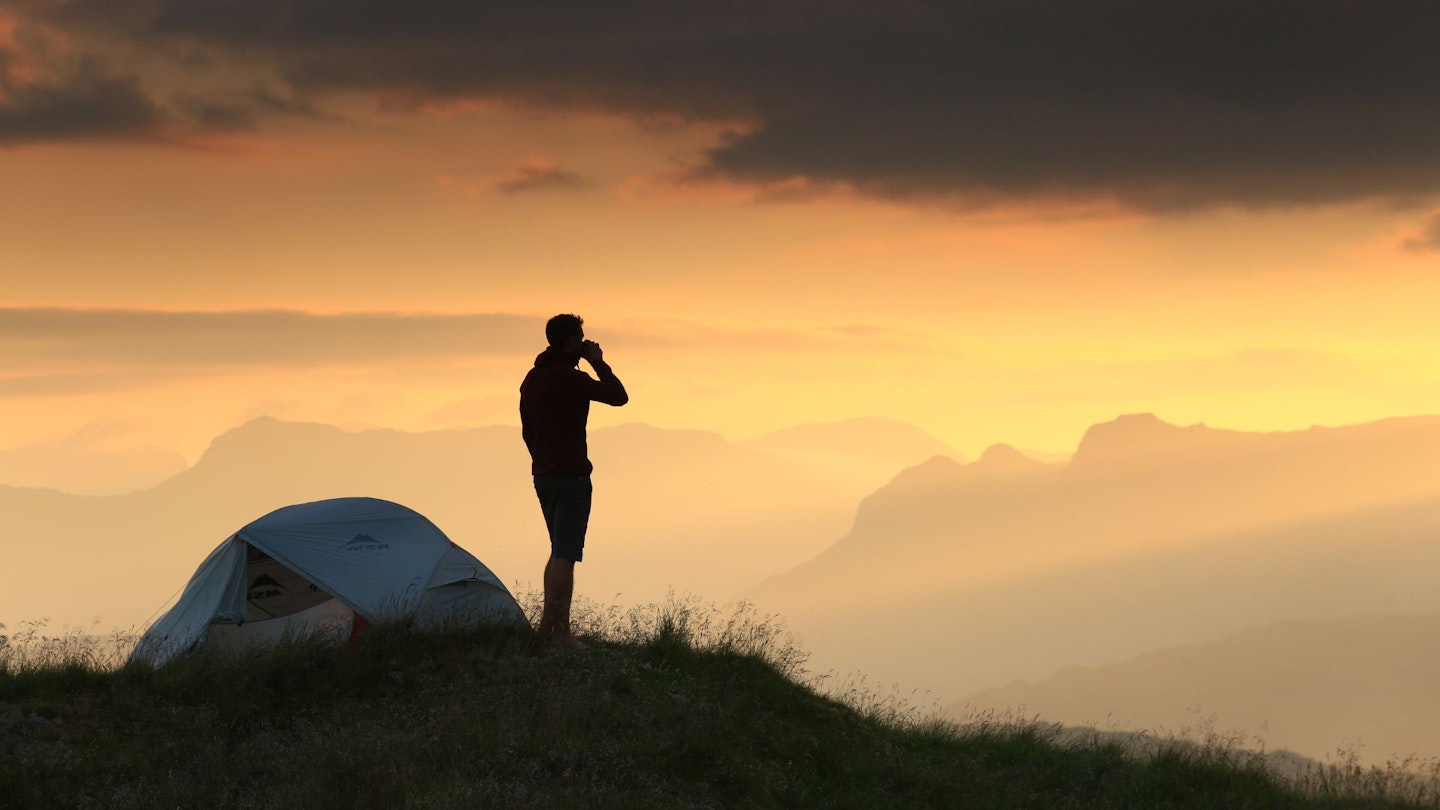
What we've done here is recommend the 'best in test' winner from each of our tent group tests, from best family tents to 3-person tents to bivvy bags. That means that each of these tents has been weighed up against at least seven alternatives – and come out on top.
Best wild camping tent: MSR Tindheim 2
Best family tent: Robens Klondike Tent
Best three-person tent: Jack Wolfskin Eclipse III
Best two-person tent: Nemo Dagger Ridge OSMO 2P
Best one-person tent: MSR Freelite 1
Best inflatable tent: Outwell Colorado 5 Air
Best bikepacking tent: Big Agnes Fly Creek HV UL1 Bikepack Solution Dye
Best pop-up tent: Quechua 3-person Blackout Pop-up
How we tested the best camping tents
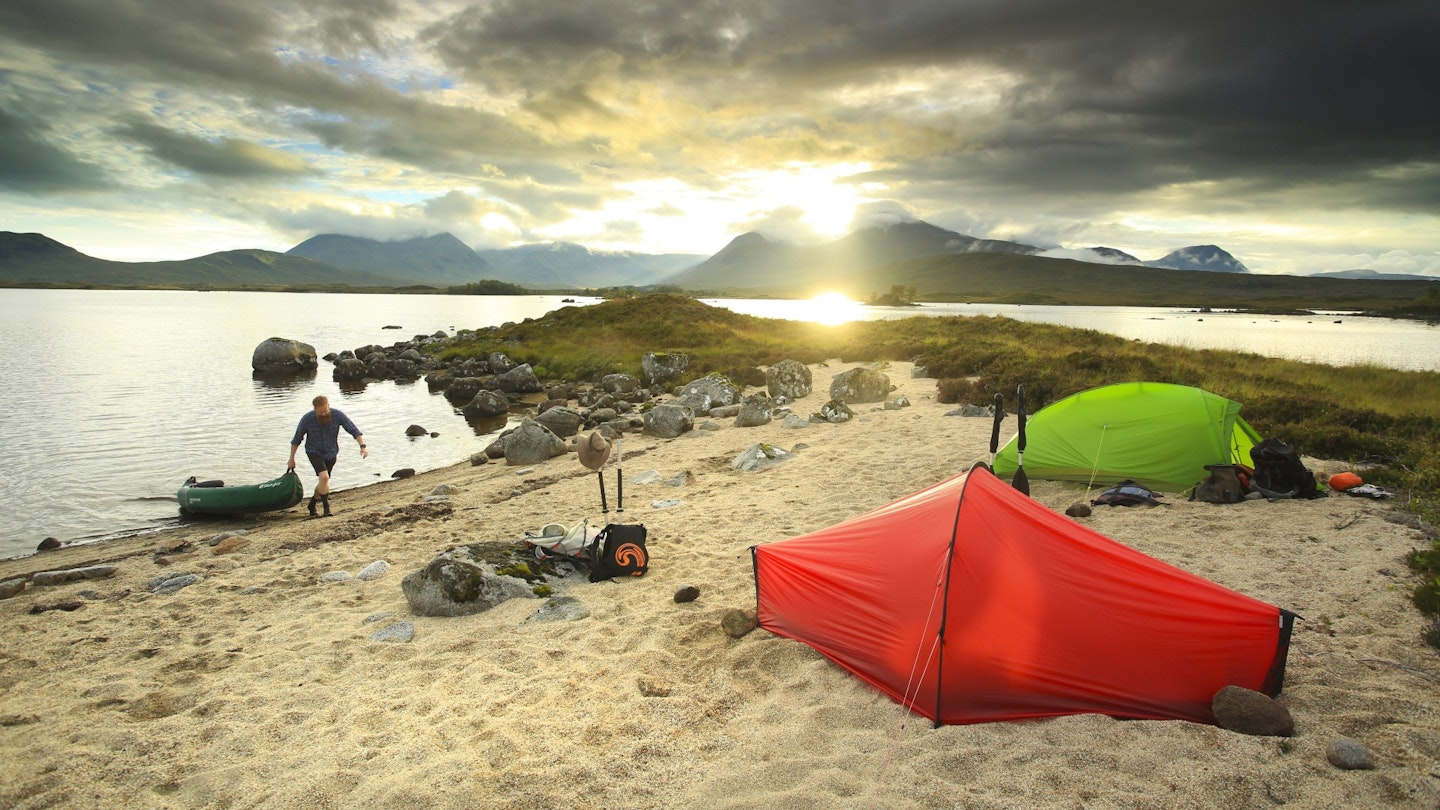
Tents, like all the gear we test, are put to work in true real world conditions. Our tent testing tends to involve both individual use where we take a tent on a camping or backpacking trip, and a group test session where we have a tent pitched alongside rivals to compare them directly against one another.
Our testers are all hugely experienced campers in all its forms. The tents recommended here were tested by our magazine's Gear Editor, Ben Weeks who is a wild camping fanatic; James Forrest, who is a lightweight backpacking enthusiast; Matt Jones who is a long-distance backpacking champion; Editor Oli Reed who is our go-to family camping expert; and our Senior Writer Chris Williams who is a huge gear geek.
When testing, we assessed each tent’s weather resistance, including waterproofing (hydrostatic head ratings, seam sealing, and bathtub floors) and wind resistance. We also considered size and capacity, ensuring adequate sleeping and storage space for solo, couple, and family use.
Weight and portability were key for backpacking tents, while ease of setup (e.g. freestanding vs pegged, poled options vs inflatable tents) was tested across all categories. Ventilation and condensation control played a big role in comfort, and we examined the durability of materials, from fabrics and poles to groundsheets.
Of course, we also rated each tent based on its additional features, such as porches, blackout tech, and multiple doors, all of which may not be strictly necessary for proper minimalist camping, but we consider them to be big pluses in the LFTO book – liveability is an underrated factor when picking the best camping tent.
Curious as to how we got these tents into our hands? Check out how we test gear.
The best tents reviewed:
The Tindheim 2 is MSR's first tunnel tent, and it hits bullseye on so many levels.
It's very spacious for a two-person hiking tent, both in the sleeping space and porch area, which makes it ideal for extending hiking and backpacking trips.
We liked its stable, weatherproof design that can cope with pretty stroppy weather. Another very useful feature in this regard is the Tindheim 2's ability to be pitched outer first, or all-in-one. Yet, it's suitable for most of the year, thanks to the inner, which has zipped panels that can either boost ventilation or prevent draughts.
The Tindheim 2 was such a crowd pleaser among our team, and as a result, earned a Gear of the Year award for 2024.
Read our full MSR Tindheim 2 review
Pros
- Very spacious two-person tent
- Easy to pitch
- Very well made
- Stable weatherproof design
- Inner-first pitching
Cons
- Not the lightest or most compact
| RRP | £440 |
| Weight | 3.2kg / 7lbs (stripped weight 2.48kg / 5.5lbs) |
| Packed size | 56 x 20cm |
| Doors | 1 |
| Vestibules | 1 |
| Inner | 68D taffeta polyester w/ 40D nylon micromesh |
| Fly | 68D PU-coated polyester (1500mm HH) |
| Groundsheet | 68D PU-coated taffeta polyester (3000mm HH) |
| Poles | 7000 Series aluminium |
| Type | Tunnel tent |
The Scandinavian Klondike might not feature the traditional family tent design, but that’s actually an advantage in our opinion.
Similar to the Nordisk Thrymheim mentioned below, this is a teepee-style tent. Standing over 3.5 meters tall and nearly 4 meters wide, it offers an impressive amount of interior space – easily fitting two double airbeds with plenty of room to spare.
The light-coloured polycotton fabric is both sturdy and breathable, and with vents along the walls, the tent stays well-ventilated. Unlike tunnel tents, you won’t find separate bedrooms here, but the open, single-room layout inside the Klondike is extremely roomy and flexible.
While we appreciate the Klondike’s unique look and comfortable livability, what really stands out for us is how simple it is to set up. Just peg out the corners and raise the central pole – an easy job for one person. It’s hard to find another family tent this straightforward to pitch.
There’s no getting around the high price tag, but we believe it’s still a worthwhile investment. Renting a similar glamping tent can be costly, so owning the Klondike quickly offsets the expense. Plus, like many Robens products, it’s a high-quality, durable option that feels much more robust than many mainstream family tents.
Read our full Robens Klondike Tent review.
Pros
- Stylish bell tent design
- So simple to pitch
- Packable and portable
- Huge living area
- Excellent weatherproofing
- Superb quality materials
Cons
- No obvious sustainability credentials
| Type | Bell tent |
| Weight | 16.7kg |
| Sleeps | 6 (but we think it's perfect for 4) |
| Packed size | 80x27cm |
| Doors | 1 |
| Bedrooms | 1 |
| Fly | HydroTex Polycotton (65% polyester / 35% cotton), 5,000mm HH |
| Groundsheet | 210T Oxford polyester (10,000 mm HH) |
| Poles | Aluminium anodised 30.8-52 mm centre pole, plus 22 mm A-frame pole in doorway |
Jack Wolfskin's Eclipse III impressed us in terms of its versatility and sustainability. For camping and hiking, there are few tents as good at both as the Eclipse III.
What makes the Eclipse III so good for camping is its plentiful interior space and excellent waterproofing. Meanwhile, while it's not the lightest tent of this type, it does still pack down reasonably well and can therefore be carried in a large comfortable pack if required. Though you'll certainly want a lighter option for long distance treks.
Regarding sustainability, the Eclipse III is made mostly from recycled material and is PFC-free. You also have a clearer conscience at the manufacturing end too, because Jack Wolfskin is also a Fair Wear Foundation member with ‘Leader’ status.
Read our full Jack Wolfskin Eclipse III review
Pros
- Versatile for hiking and camping
- Sustainable
- Very good weather protection
Cons
- Not the lightest tent of this type
| RRP | £320 |
| Weight | 5.2kg / 12lbs |
| Packed size | 54 x 22cm |
| Doors | 2 |
| Vestibules | 2 |
| Inner | 68D polyester |
| Fly | 75D polyester (4,000mm HH) |
| Groundsheet | 150D polyester (10,000mm HH) |
| Poles | Fibreglass |
| Type | Freestanding dome |
The appeal of a bivvy relies on being lighter and more compact than a tent. Over the years, some solo tents have got lighter, and some bivvies (especially those that use a hooped pole) have become more bulky. And they have almost met in the middle.
Luckily, Outdoor Research has maintained the low weight/packed size edge that bivvies have over tents with the Helium, which has become our benchmark bivvy bag.
At under 500g, it's a very lightweight shelter. Granted, it's not the very lightest bivvy you can get but the Helium offers very good weather protection too, which means you can use it most of the year round.
The hooped pole drastically improves liveability and reduces a feeling of claustrophobia compared to bivvy bags without a pole.
Read our full Outdoor Research Helium Bivvy review
Pros
- Protective
- Versatile
- Lightweight for hooped design
- Better waterproofing and breathability than most rivals
- Surprisingly durable
Cons
- Not as roomy as some rivals
- Some rivals have superior eco credentials
| RRP | $225 |
| Weight | 494g / 17.4oz |
| Dimensions | 208 x 66cm (shoulder)/48cm (foot) |
| Main material | Bluesign-approved 30D nylon 2.5-layer Pertex Shield Diamond Fuse (40D nylon floor) |
| Waterproof rating | 20,000mm HH |
| Breathability rating | 20,000g/m²/24 hour |
| Packed size | 31 x 9cm |
Best roof tent
 LFTO/Fliss Freeborn
LFTO/Fliss Freeborntentbox.com
The TentBox Classic 2.0 stands out here like a hiker wearing blazing red hiking jacket on a snowy mountainside. But the Classic 2.0 can be a good tent option for hikers. Perhaps you're the type that prefers fast-paced day hikes, for example. With a roof tent on your car, you can bounce around the country, conquering summits, covering ground quickly.
The roof tent provides the sleeping comfort of a campervan but the tenting experience. The TentBox Classic 2.0 is the best among a growing choice of roof tents. One of the key factors is its hardshell design. Not only does it look better, it's more protective and aerodynamic than those that use a heavy-duty soft cover.
Adding to the convenience is the fact you can collapse the Classic 2.0 with your sleeping gear still in it. So it really is setup at your overnight stop in seconds. Among the neat accessories for the Classic, an insulated inner makes the Classic 2.0 suitable for winter trips too.
No doubt the TentBox Classic 2.0 is expensive, but if it suits your travel and hiking style, its returns are healthy.
Read the full TentBox Classic 2.0 review here.
Pros
- Super fast to set up
- Hardy and aerodynamic hardshell
- Lots of clever design touches
Cons
- No skylights
- Heavier than softshell models
| RRP | £2,195 / $2,795 |
| Weight | 65kg / 143lbs |
| Capacity | 2 person |
| Doors | 2 |
| Main fabric | 280gsm rip-stop canvas walls, 2000mm HH |
| Hardshell | ABS with UV protective treatment |
| Frame | Aluminium with stainless steel hinges and fixings |
| Packed size | 210 x 128 x 35cm |
| Type | Roof tent |
The Colorado 5 Air is an excellent tent, featuring a classic design with four air-filled beams and a central archway. It offers two roomy bedrooms, along with a porch and a living area tall enough for most adults to stand comfortably (195cm at its highest point).
Although it takes a touch longer to set up compared to some other family air tents, the process is straightforward – especially considering the tent’s generous size.
Unlike many family tents that have two identically sized bedrooms, the Colorado 5 Air includes a spacious master bedroom that accommodates three adults side-by-side and a smaller bedroom that fits two adults, though it’s a bit snug.
Alternatively, you can open up the space to create one large sleeping area.
During testing, the tent held up impressively against wind and rain, and its specifications suggest it could handle extended periods of wet weather.
One standout feature is the magnetic central door, which allows for a quick and quiet exit – ideal for late-night trips to the loo.
In summary, this tent is highly practical and comfortable: easy to set up, roomy, and smartly designed. If you’re planning a longer family camping holiday, it's an excellent choice.
See our full Outwell Colorado 5 Air review here.
Pros
- Innovative magnetic bedroom opening
- Customisable bedrooms
- Premium feel and design touches
Cons
- Stuff sack isn’t the best
- Rudimentary design of the peg and pole bags
- Heavier and larger pack than most
| RRP: | £944.99 |
| Internal dimensions: | 545 x 320cm |
| Internal peak height: | 195cm |
| Packed size: | 78 x 40 x 45cm |
| Weight: | 26.6kg / 4st 2.6lbs |
The OSMO line has been around for a while, but this new ‘Ridge’ edition is the most polished version to date.
The most noticeable change is its more spacious design, with taller doors, a higher peak, and larger vestibules – all while keeping the weight under 2kg.
It now offers 109cm of headroom, a 223cm length and a completely rectangular floor plan with steep end walls, making the inside feel even more generous. Two wide sleeping mats fit side by side with ease.
The tent uses NEMO’s proprietary OSMO ripstop fabric, which is now even more waterproof, boasting a 3,000mm hydrostatic head rating for both the flysheet and floor. It also resists stretching better than sil-nylon and won’t droop when wet.
Additional upgrades include new all-metal tensioning components, a waterproof ‘Landing Zone’ gear tub for the porch, Nightlight Pockets, and easy one-handed door toggles.
While it’s not the lightest or most budget-friendly option, its combination of comfort, quality construction, and weather resistance is hard to beat.
For UK backpackers and wild campers, it’s a superb three-season option offering both performance and comfort.
Read our full Nemo Dagger Ridge OSMO 2P Tent review here. We also reviewed the 3-person version last year and gave it top marks.
Pros
- Excellent internal space and headroom creates a genuine 2-person tent
- Good waterproof performance thanks to upgraded OSMO fabric
- Great build quality and premium materials
- Generous vestibules with innovative waterproof Landing Zone
- Lightweight and compact for its class
- Practical features like Nightlight Pockets and one-handed door toggles
Cons
- Not cheap for a three-season backpacking tent
- Inner-pitch-first design isn’t ideal for wet-weather setup
- Slightly narrower than some competitors (127cm width)
- A bit fiddly to attach fly to centre spreader bar
| RRP: | £560 / $499.95 |
| Internal dimensions: | (L x W) 223 x 127cm |
| Peak height: | 109cm |
| Packed size: | 51 x 16cm |
| Trail weight: | 1.9kg/4.8lb 3oz |
| Doors: | 2 |
| Porches: | 2 |
| Design type: | Freestanding |
| Materials: | Fly: OSMO Ripstop (3000mm HH), Inner: 40D nylon/ No-see-um mesh, Floor: OSMO Ripstop (3000mm HH), Poles: DIAPOLE anodised aluminium |
MSR has really nailed it with this tent. The smartly engineered skeleton pole system uses a wishbone shape at one end and a cross pole at the peak (called an “overhead spreader bar”), creating a tight frame that the inner tent attaches to. This results in almost vertical walls, excellent headroom and great tension throughout the inner tent, creating a spacious and efficient rectangular layout.
A good-sized vestibule is included too. The tent pitches inner-first and is semi-freestanding. Inside, there’s plenty of mesh for airflow and thoughtfully designed zippers that always close at a single point. While the hydrostatic head ratings aren’t very high (1,200mm for the groundsheet and flysheet), the fabrics used are proven and reliable.
The flysheet is treated with both PU and silicone coatings and made from a tight, high-density weave – an approach MSR’s designers claim ensures true waterproofing. However, there are a few issues worth noting. The flysheet has a cut-out to save weight, which exposes some of the inner tent (even though it’s waterproof) and could be a vulnerability in heavy rain.
Additionally, the steep walls can catch the wind, the mesh-heavy inner can feel chilly and drafty, and the groundsheet is a bit thin. Despite these drawbacks, this tent is a lightweight marvel – offering impressive comfort for just 909g.
Read our full MSR FreeLite 1 review here
Pros
- Ultralight
- Excellent internal space
- Effective ventilation
- Taut structure
Cons
- Underwhelming waterproofing stats
- Not the most weather resistant
| RRP | £450 / $435 |
| Internal dimensions (LxW) | 221 x 84cm |
| Internal peak height | 100cm |
| Packed size | 50 x 12cm |
| Weight | 909g / 32oz |
The Big Agnes Fly Creek HV UL1 Bikepack Solution Dye stands out as an exceptional ultralight option for bikepackers, with its focus on minimising weight and on-bike storage. Tipping the scales at just 1,110 grams and packing down to only 36x15 cm, it’s ideally suited for cyclists who cover big distances and need to keep their gear as streamlined as possible.
A highlight of this tent is the innovative Shortstik Poleset, which makes it very easy to pack away in compact spaces like under handlebars or inside frame bags. Other thoughtful cycling-oriented features, including helmet attachment loops and adaptable webbing for multiple packing options, boost its bikepacking appeal.
However, such an emphasis on lightness and compactness does come at a cost: interior space and comfort are somewhat reduced compared to some competitors. The solo version we tested is sufficient for one person, but the tapered design and absence of a cross pole do mean that the living area inside isn’t particularly roomy.
The Fly Creek HV UL1 Bikepack Solution Dye performs reliably in moderate weather, but for more demanding or extreme conditions, its lightweight materials and 1,200mm hydrostatic head rating may not provide enough protection.
Read our full Big Agnes Fly Creek HV UL1 Bikepack Solution Dye review for more.
Pros
- Ultralight
- Versatile on-bike stowage
- Bespoke storage bag
- Impressive eco credentials
- Taut structure
- Good features
- Comfortable interior
Cons
- Disappointing hydrostatic head ratings
- Mesh inner is cold and draughty
- Fiddly storage bag
- Materials feel thin and flimsy
- Inner-first pitching
- Expensive
- Small porch
| RRP | £499.99 / $399.95 |
| Internal dimensions (LxW): | 218x97cm |
| Internal peak height: | 102cm |
| Packed size: | 36x15cm |
| Weight: | 1,110g / 39.2oz (including carry bag) |
The Quechua 3-person Blackout Pop-up Fresh & Black Tent stands out as the best in a recent test of six pop-up tents, offering impressive space, weather protection, and smart features like a two-skin design and blackout interior for better sleep.
It pitches in two to three minutes, with sturdy construction and a roomy, dome-like living space and porch. Waterproofing and ventilation are solid, with a hydrostatic head of 2,000mm, sealed seams, and multiple mesh vents, though it’s best for mild conditions and occasional use as Decathlon suggests.
The downsides include a hefty weight (5.5kg), large pack size, and a higher price tag, making it more suitable for car camping than backpacking. Packing away requires patience but becomes manageable with practice. Overall, it’s a modern, well-designed option with superb liveability – a real bargain in our eyes.
See our full Quechua 3-person Pop-up review for more detail.
Pros
- Decent weather protection
- Plenty of room
- Two-skin design
- Quick to put up
- Solid features, including black-out interior
Cons
- Expensive
- On the heavy side
- Others are easier to pack away
| RRP | £139.99 / $249 |
| Internal dimensions (LxW) | 210x210cm |
| Internal peak height | 115cm |
| Packed size | 90x8cm |
| Weight | 5.5kg / 12lb 2oz |
How to choose the best tent for you
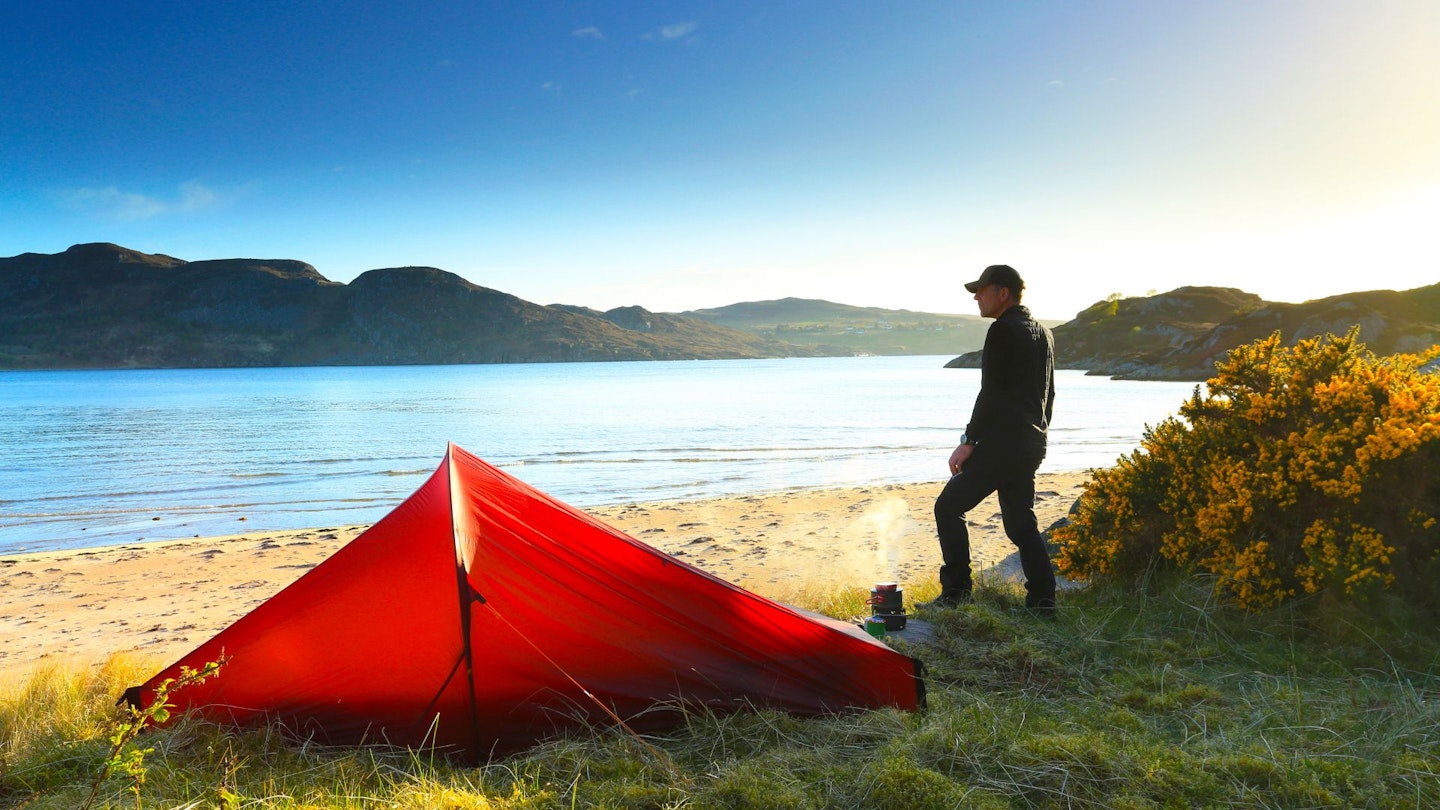
What tent shape is best?
Dome and geodesic tents have good stability and strength – geodesic tents are the best for winter, but these types tend to be heavier and less spacious than other shapes.
Tripod or backpacking-style tents (like in the photo above) are often the lightest and most compact type of tent you can get for going to a bivvy or tarp. They are most commonly for one person or pairs.
Tunnel tents provide the best ratio of space and weight. They can be quite stable too, if using stronger poles, more guy lines, and aren't tall. There are tunnel tents for every season and use, from family camping to backpacking and mountain treks.
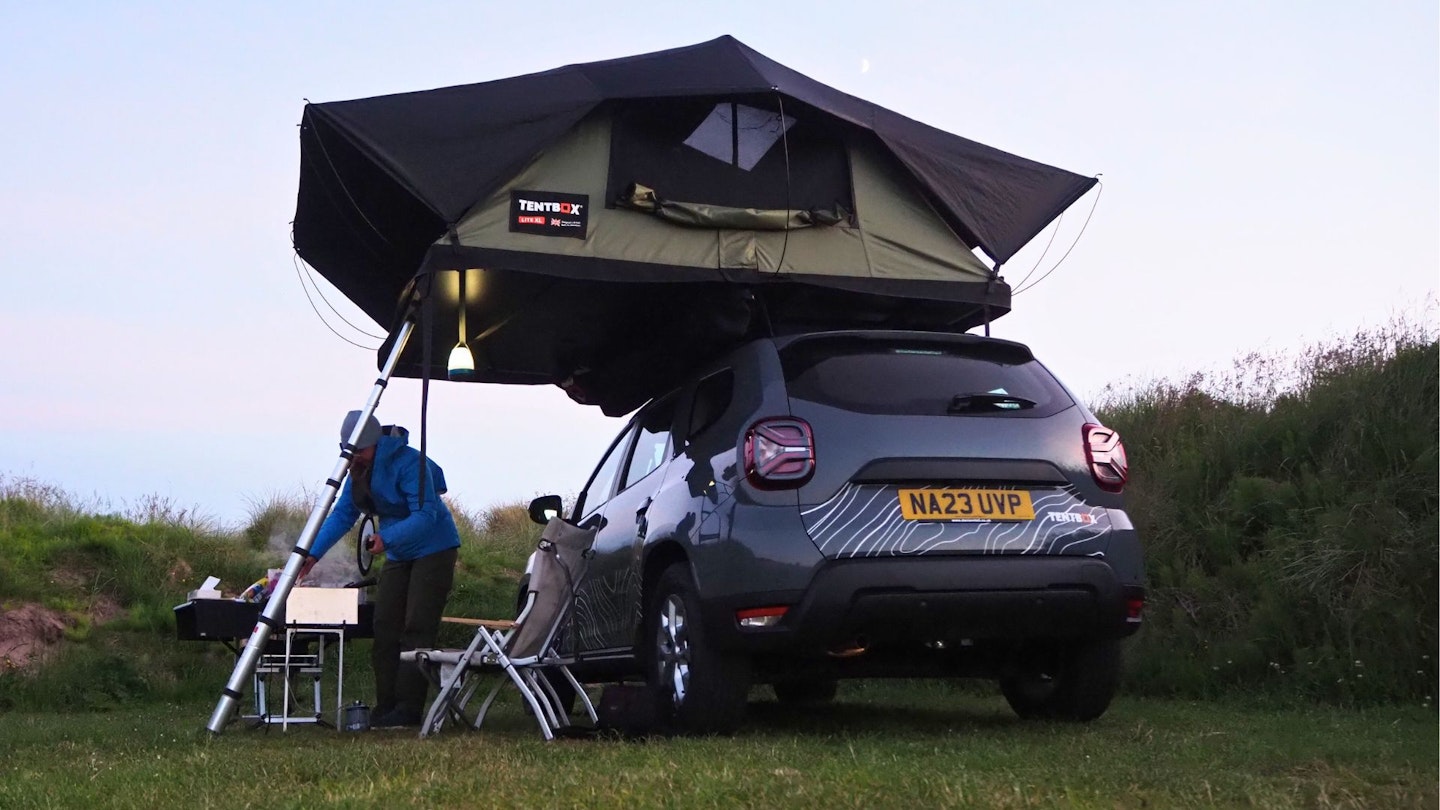
Beyond this, you have other tent types such as roof tents and teepee-style tents. Roof tents are the easiest of all to pitch and are extremely comfy to sleep in because they have a proper mattress and feel more like a bedroom. They are quite pricey, though. Bell/teepee-style tents are associated with glamping and their raised ceilings and often canvas construction make for superb liveability. But they usually only have one space rather than separate rooms.
What are the best materials for a tent?
Polyester and nylon are the two most common materials used to make tents these days. Polyester is inexpensive and doesn't sag when wet. Nylon is lightweight and strong. Some tents use a canvas-type material (usually poly-cotton), which is heavy but very durable and breathable.
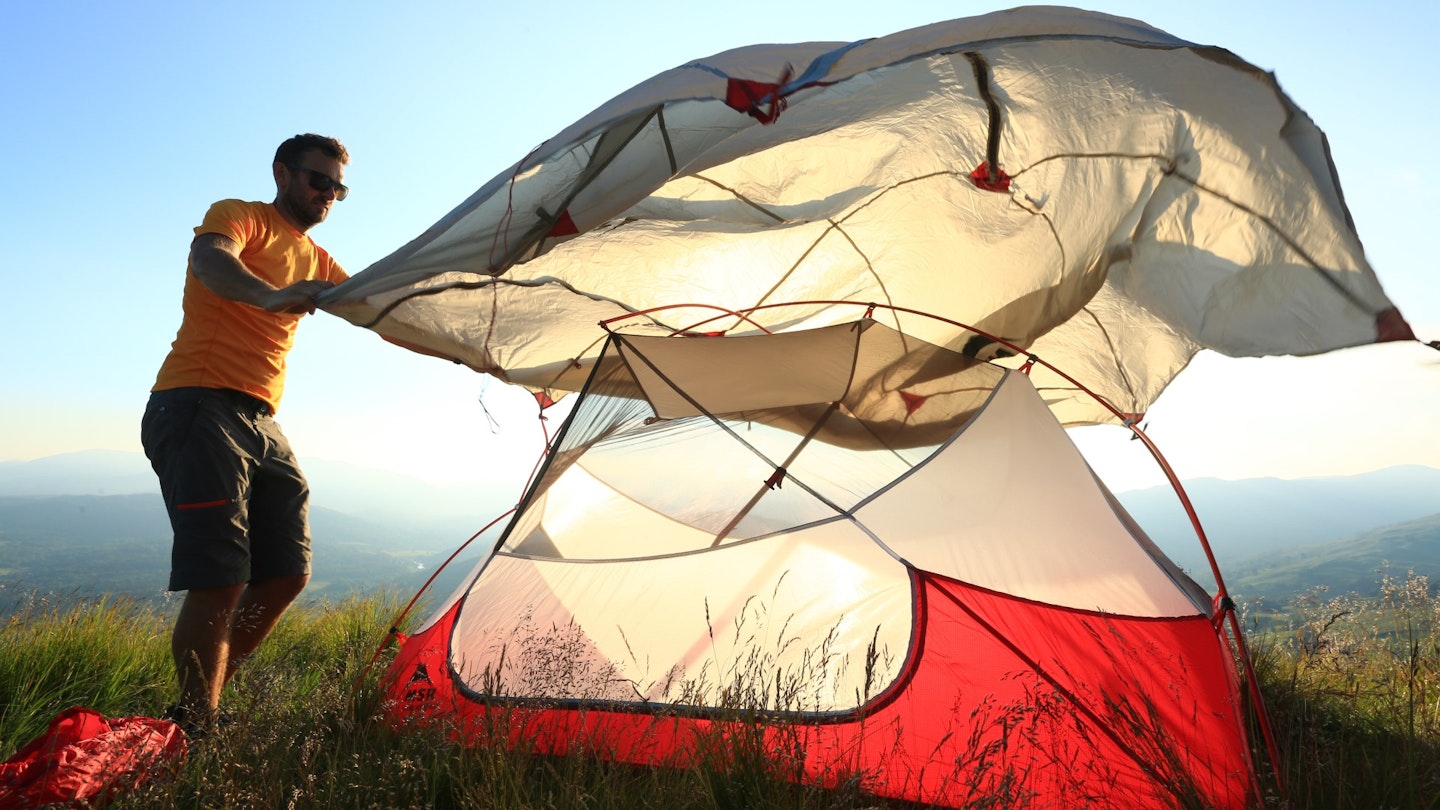
When it comes to polyester and nylon materials, check the denier rating of the fabrics too. A denier rating (e.g., 15D) indicates the thickness of the fibres of the tent fabric. It's a good indicator of fabric strength, but predictably adds weight.
In terms of waterproofing, this is an area that contains a lot of acronyms and unfamiliar terms. As a rule, silicone-coated outer fabrics are stronger and lighter than polyurethane (PU)-coated ones, but more expensive.
What do waterproof ratings mean?
Waterproof ratings (hydrostatic head, or HH) are another important aspect. The figure refers to how much water pressure the fabric can withstand (e.g., 3000mm HH = 3-metre column of water pressure). The higher the figure, the more waterproof a fabric is, but weight often climbs with it because more coating is needed.
Seam sealing is important to waterproofing too. A common tactic is taped seams, but the taping can wear away over the years. Some brands are coming up with alternatives, so have a look into these.

Space and liveability
In the same way, you need to ensure there is enough sleeping space, you also need to check how much storage space a tent has for your gear. This includes vestibules and storage pockets.
If there will be at least two of you in the tent, having a door on each side is always handy. And two-door tents often have two vestibules, which increases storage space.
For family tents, space and liveability are vital. Large tents have a few different layouts, so do some research and visit some camping stores to see what suits your needs best. Also consider aspects such as light, ventilation, and privacy.
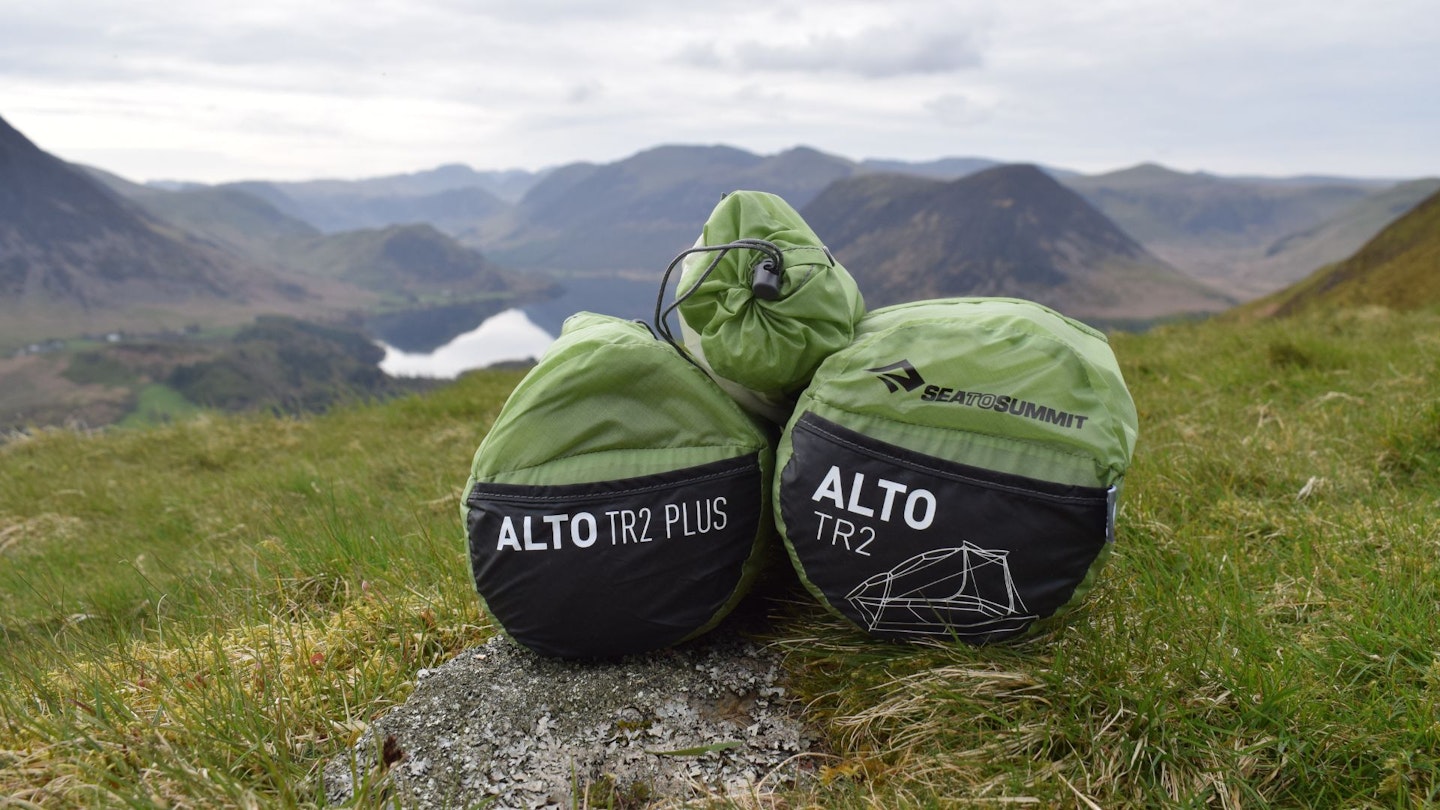
Weight and packed size
We want our hiking tents to be as light as possible, but there needs to be a balance. If we're 3-season or winter campers, durability and weather resistance are equally important. For all, the right internal space is crucial too.
Some tents have a separate stuff sack for the inner, fly, and groundsheet to help distribute the weight among hikers. But 1-1.5kg backpacking tents and bivvy bags are approaching the size of a Subway sandwich when packed down and therefore aren't such a burden.
Larger family tents are always going to be moderately bulky, but as these get transported in the car this isn't such an issue, so long as there's space left for all your other camping gear.
Additional features
Beyond the basics, a few key extras can make all the difference in your camping experience. A decent porch or vestibule is invaluable for keeping wet gear out of your sleeping space and providing extra storage.
Some tents now come with blackout technology, which blocks out early morning sunlight—ideal if you're not keen on waking up at dawn. Multiple doors are another handy feature, especially for larger tents, as they make getting in and out easier without clambering over your tent mate in the middle of the night.
Does your tent match your budget?
Tents range wildly in price, from budget-friendly options under £100 to high-end models costing over £400. At the lower end, expect simple designs, lightweight materials, and fewer features—great for occasional camping or festivals.
Mid-range tents (£150-£400) tend to strike the best balance between durability, weather protection, and features, making them the sweet spot for most campers. If you're after premium materials, top-tier weatherproofing, or a tent designed for extreme conditions, high-end models justify their price with long-lasting performance and cutting-edge design.
How to clean a tent
This is a really simple but also very important step. Tents need to be cleaned properly after each decent use to maintain fabric breathability, waterproofing, and overall condition. UV rays and abrasive dirt wears away at tent fabrics and can cause them to be less effective.
If your tent does start to leak, there are things you can do to solve that. See our guide on how to waterproof a tent for more.
Products such as Grangers Kit and Nikwax Camping Care Kit (below) are ideal for tent fabric care.
Contains Grangers Tent and Gear Cleaner and Repel. The former cleans the fabric, the latter applies durable water repellency. Can be used for tents and other gear such as packs.
Pros
- PFC-free
- Water-based
- Very effective
Cons
- Nikwax Camping Care Kit is better value
This kit comes with Nikwax's tent and gear wash and reproofing sprays, plus microfibre cloths and a 10-litre dry bag. Can be used on tents and packs.
Pros
- PFC-free
- Water-based
- Dry bag included
Cons
- We prefer tent wash as a concentrate (like Grangers)
About the author
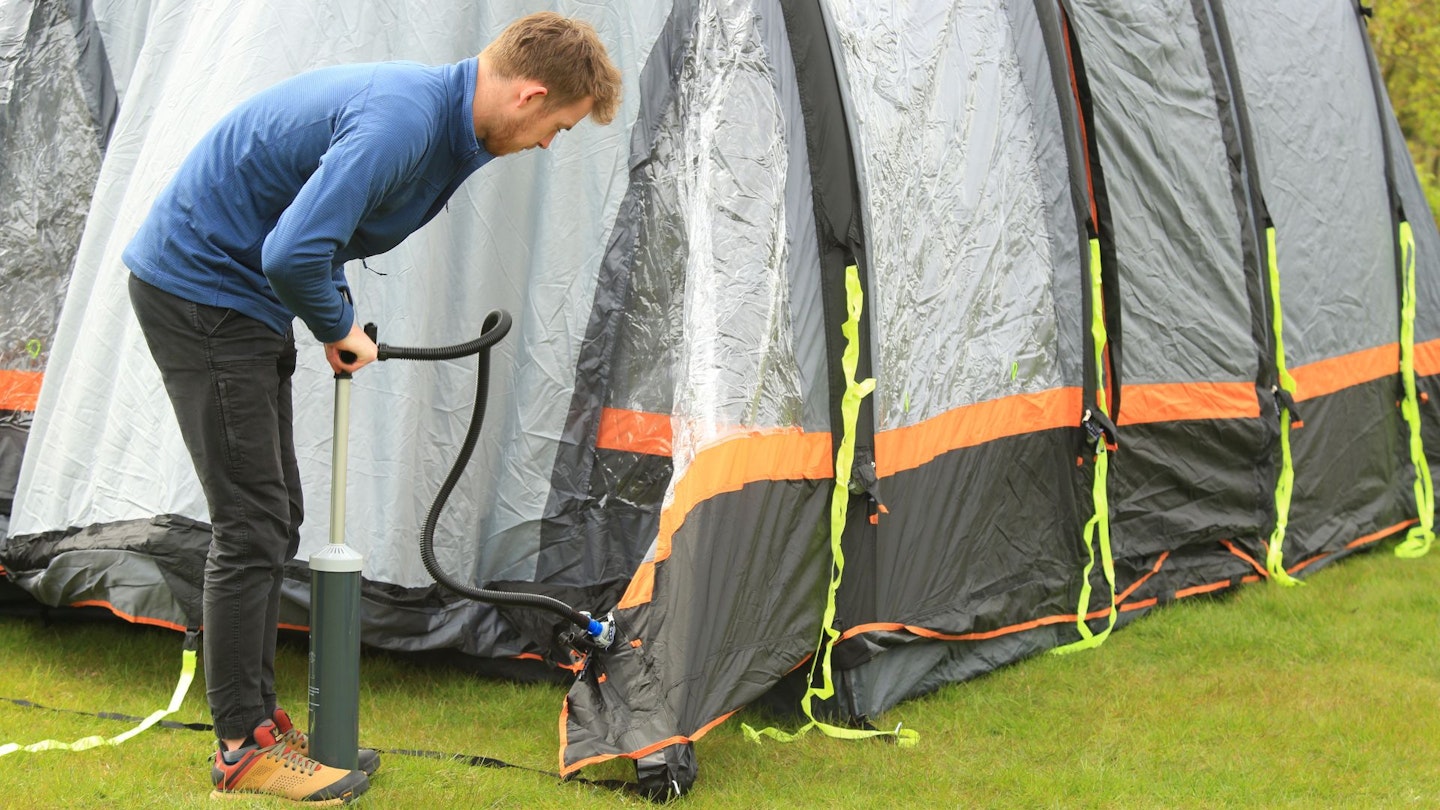
Chris Williams is LFTO's Senior Writer. He has extensive knowledge of tents and camping, having used the portable shelters all his life from everything from family camping in summer to arduous mountain missions.

